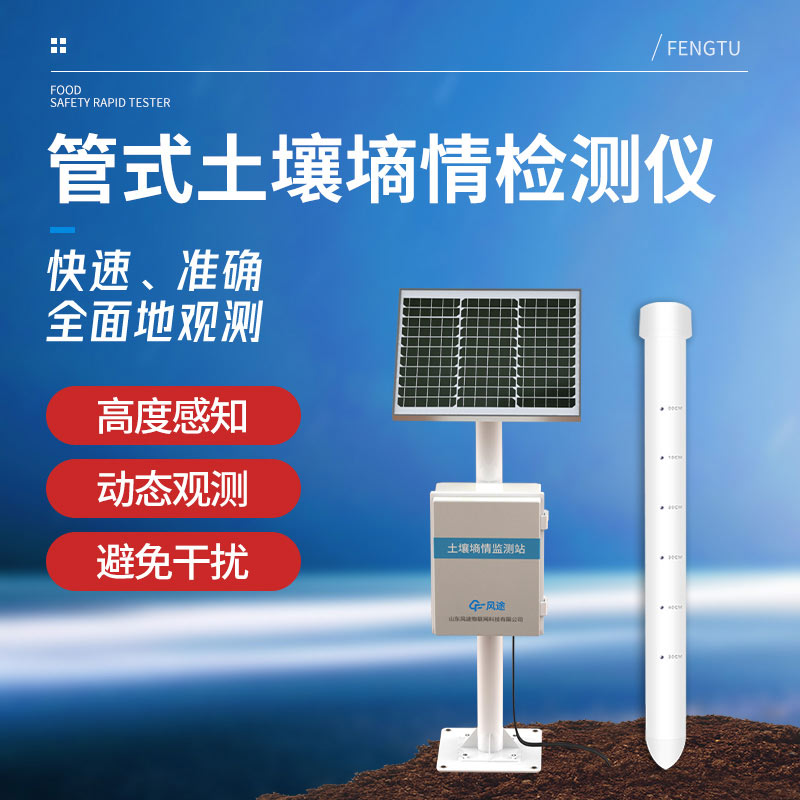Shandong Fengtu IOT Technology Co., Ltd
Sales Manager:Ms. Emily Wang
Cel,Whatsapp,Wechat:+86 15898932201
Email:info@fengtutec.com
Add:No. 155 Optoelectronic Industry Accelerator, Gaoxin District, Weifang, Shandong, China

Sales Manager:Ms. Emily Wang
Cel,Whatsapp,Wechat:+86 15898932201
Email:info@fengtutec.com
Add:No. 155 Optoelectronic Industry Accelerator, Gaoxin District, Weifang, Shandong, China
time:2024-09-05 12:58:06 source:Weather Station viewed:568 time
Soil moisture, which refers to the humidity state of the soil, is crucial for plant growth. In agricultural planting, farmers often mention terms like "seizing moisture," "conserving moisture," and "losing moisture." These practices are all aimed at maintaining suitable soil humidity to promote the healthy growth of crops. The quality of soil moisture directly affects plant growth and development, just as important as humans need food.
Plants absorb water and nutrients dissolved in water through their extensive root systems. Photosynthesis, which is the foundation of plant growth, requires the participation of water molecules. Therefore, monitoring and forecasting soil moisture are of great significance for agricultural production and plant growth.
So, how can we accurately monitor and report soil humidity to ensure it meets the optimal conditions for plant growth?
Judging by naked eye observation or touch alone is often not accurate enough. Therefore, people usually use the oven-dry method to determine soil moisture content, such as the constant temperature oven-dry method, which calculates the moisture by comparing the weight difference before and after drying the soil. Although this method is accurate, it has some drawbacks, such as soil structure may be disrupted by sampling, deep sampling is difficult, and it is not suitable for long-term continuous monitoring. Moreover, the drying process is time-consuming and requires specific equipment, making it unsuitable for rapid or field operations.
In the 1970s, the emergence of dielectric moisture meters changed the way soil moisture was measured. These instruments determine moisture content by measuring the dielectric constant of the soil, as the dielectric constant of water is much higher than that of soil and air. By the 1990s, dielectric moisture meters had become the standard tool for soil moisture research, widely used for their accuracy and convenience.
The Tube Soil Moisture Station uses the dielectric method, with sensors set at different depths to monitor the temperature and humidity of multiple soil layers. It uses a PVC tube as the casing, with an internal device that emits high-frequency probing waves to sense soil conditions. The monitoring station supports data transmission via RS485 or GPRS/4G networks and can be powered by an external power supply or built-in battery. This design makes the device easy to install and use, suitable for various environments.

gas sensor detects a specific gas and measures its content in the air. A gas sensor is a device that detects the presence or concentration of a gas in the atmosphere....
Carbon monoxide is a colorless and odorless toxic gas. In coal mines, the incomplete combustion of coal will generate a large amount of carbon monoxide. Its ability to bind with hemoglobin is far stronger than that of oxygen, which will hinder the transportation of oxygen and lead to human hypoxia....
weather measuring instruments and their uses are scientific and technical equipment specially used to observe, measure and monitor weather and climate, mainly thermometer, barometer, rain gauge, wind vane, anemometer and so on....
A miniature weather station is a compact weather sensor device that is often used to measure and record data on weather parameters such as temperature, humidity, air pressure, wind speed and wind direction. Compared to traditional large weather stations, mini weather stations are small, light, easy...